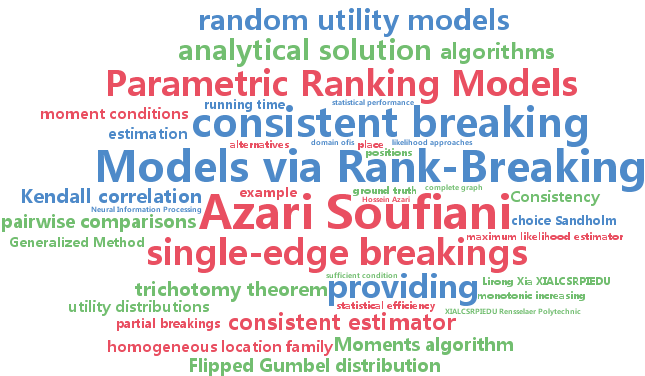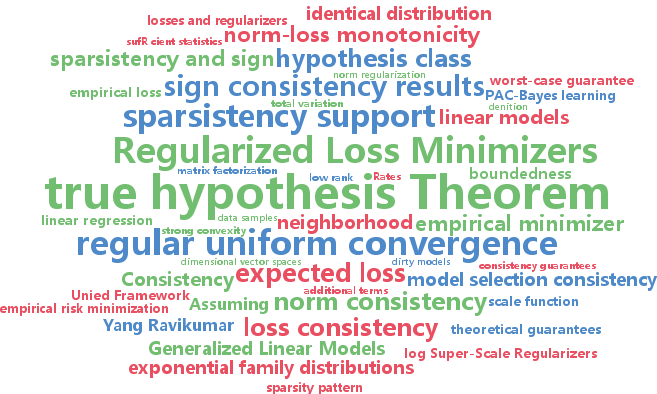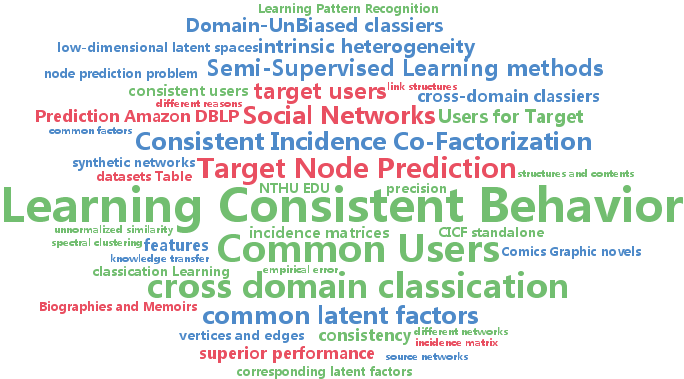consistency
-
Hossein Azari Soufiani and David Parkes and Lirong Xia
Computing Parametric Ranking Models via Rank-Breaking (pdf)
Rank breaking is a methodology introduced by Azari Soufiani et al. (2013a) for applying a Generalized Method of Moments (GMM) algorithm to the estimation of parametric ranking models. Breaking takes full rankings and breaks, or splits them up, into counts for pairs of alternatives that occur in particular positions (e.g., first place and second place, second place and third place). GMMs are of interest because they can achieve significant speed-up relative to maximum likelihood approaches and comparable statistical efficiency. We characterize the breakings for which the estimator is consistent for random utility models (RUMs) including Plackett-Luce and Normal-RUM, develop a general sufficient condition for a full breaking to be the only consistent breaking, and provide a trichotomy theorem in regard to single-edge breakings. Experimental results are presented to show the computational efficiency along with statistical performance of the proposed method.
-
Jean Honorio and Tommi Jaakkola
A Unified Framework for Consistency of Regularized Loss Minimizers (pdf)
We characterize a family of regularized loss minimization problems that satisfy three properties: scaled uniform convergence, super-norm regularization, and norm-loss monotonicity. We show several theoretical guarantees within this framework, including loss consistency, norm consistency, sparsistency (i.e. support recovery) as well as sign consistency. A number of regularization problems can be shown to fall within our framework and we provide several examples. Our results can be seen as a concise summary of existing guarantees but we also extend them to new settings. Our formulation enables us to assume very little about the hypothesis class, data distribution, the loss, or the regularization. In particular, many of our results do not require a bounded hypothesis class, or identically distributed samples. Similarly, we do not assume boundedness, convexity or smoothness of the loss nor the regularizer. We only assume approximate optimality of the empirical minimizer. In terms of recovery, in contrast to existing results, our sparsistency and sign consistency results do not require knowledge of the sub-differential of the objective function.
-
Samory Kpotufe and Eleni Sgouritsa and Dominik Janzing and Bernhard Schoelkopf
Consistency of Causal Inference under the Additive Noise Model (pdf)
We analyze a family of methods for statistical causal inference from sample under the so-called Additive Noise Model. While most work on the subject has concentrated on establishing the soundness of the Additive Noise Model, the statistical consistency of the resulting inference methods has received little attention. We derive general conditions under which the given family of inference methods consistently infers the causal direction in a nonparametric setting.
-
Shan-Hung Wu and Hao-Heng Chien and Kuan-Hua Lin and Philip Yu
Learning the Consistent Behavior of Common Users for Target Node Prediction across Social Networks (pdf)
We study the target node prediction problem: given two social networks, identify those nodes/users from one network (called the source network) who are likely to join another (called the target network, with nodes called target nodes). Although this problem can be solved using existing techniques in the field of cross domain classification, we observe that in many real-world situations the cross-domain classifiers perform sub-optimally due to the heterogeneity between source and target networks that prevents the knowledge from being transferred. In this paper, we propose learning the consistent behavior of common users to help the knowledge transfer. We first present the Consistent Incidence Co-Factorization (CICF) for identifying the consistent users, i.e., common users that behave consistently across networks. Then we introduce the Domain-UnBiased (DUB) classifiers that transfer knowledge only through those consistent users. Extensive experiments are conducted and the results show that our proposal copes with heterogeneity and improves prediction accuracy.



